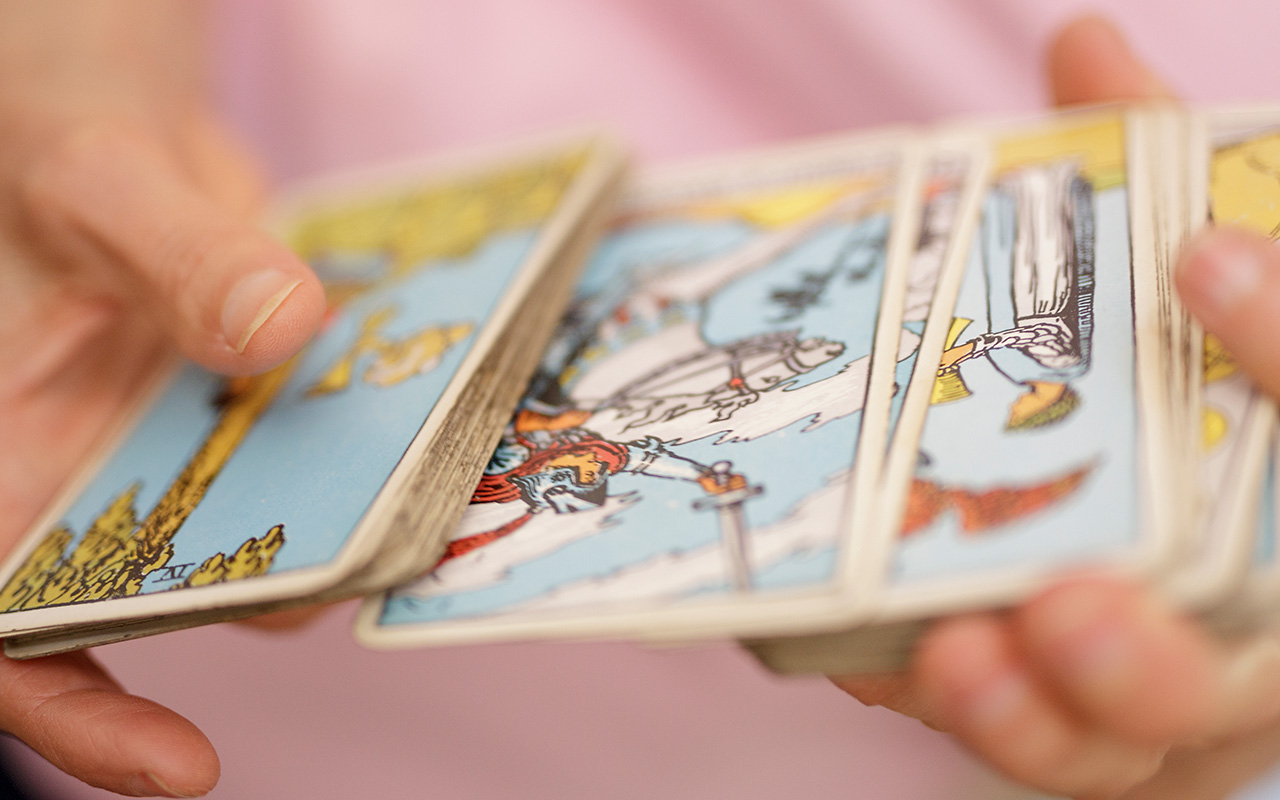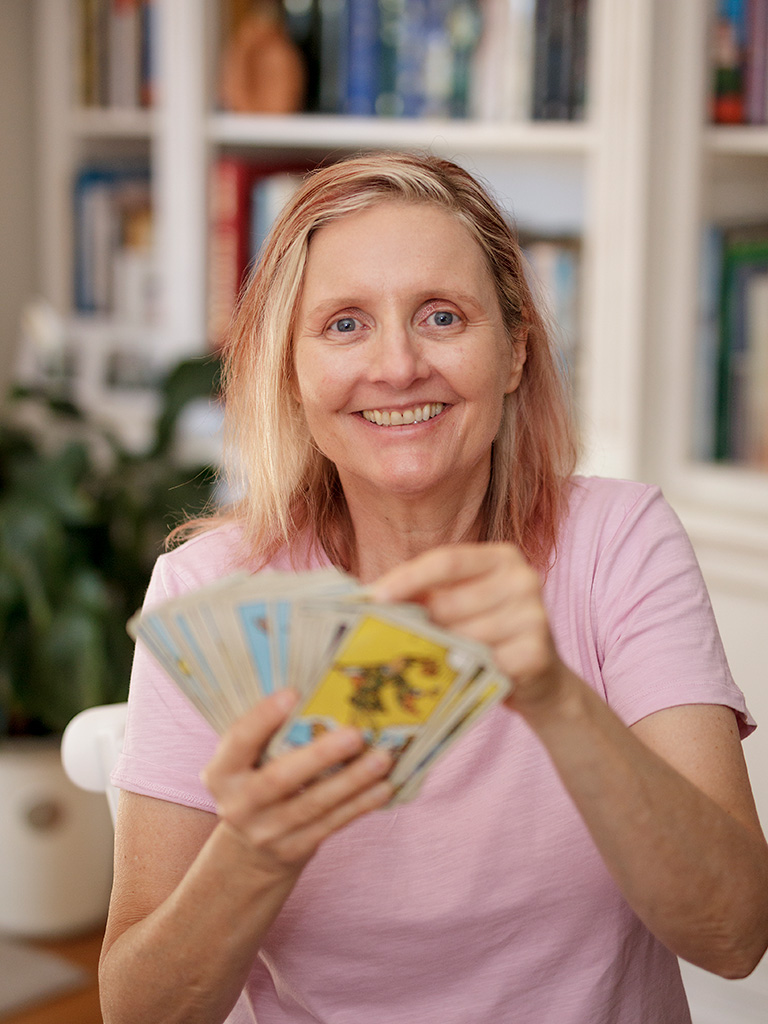
Most people might think tarot cards are all about fortune telling by people in bohemian clothes or pointy hats, but Hastings teacher and writer Tan Lee thinks that that couldn’t be further from the truth. Tan writes about the tarot in her blog The Tarot Teaclub.
It’s believed the word tarot came from the Italian word ‘tarocchi’, which comes from ‘trionfi’, meaning triumph or victory. So, how did the tarot come to be used for fortune telling? Tan explains: “The Bible was used for fortune telling, too. It was very common. Even today, some Christians will hold a problem in their head and open a page. So, I think there was a tradition of using wisdom texts to fortune tell, and the fortune telling aspects of tarot cards came from that. Then, the Gypsies, or the Roma people as we should call them, went into Europe. No one wanted them, and that was the easiest way for them to earn money. But I also suspect that a lot of the understanding of the cards had been lost anyway in the intermittent years.”
“The cards in the Major Arcana, which means ‘big secret’, are, for me, life lessons. Knowing the order of those cards and how they interact with each other provides lessons, which I’ve found really useful. In Life Lessons Tarot, the cards are numbered from zero to twenty-one, and you can further break them down: from zero to seven – childhood, eight to fourteen – adulthood, and fifteen to twenty-one is maturity.”
How old the tarot is varies. Tan says, “They’ve traced the tarot back to the fourteenth century. Tarot and playing cards originated around the same time, which I find really interesting. The thinking generally is that tarot came from playing cards, but in my experience, the simpler things tend to come from the more profound things. So, my gut feeling is that tarot came first, and became known for being used by Gypsies for fortune telling. Gypsies was a slang term for people who came out of the Middle East at that time, and those people originated in northern India. They were in the Middle East for a couple of hundred years, and then their descendants were pushed out into Europe.
There are a lot of similarities between tarot and the tantra tradition, which I’ve noticed that no one has really picked up on. Tantra is all about finding the best way to live, and tarot can be a tool to help you find the best way to live.”

Tan’s interest in the tarot was completely accidental. “I was more interested in astrology, and I went to a place to get some charts done, and I saw on the notice board there was a link to a ‘Live the Tarot’ course, and on the spur of the moment, for no particular reason, I decided to do it. Often, they’re the best decisions,” Tan says, chuckling. “I did this amazing course where you learn about the tarot for half the year, and then you live the cards for half the year. I’d take a card, look at the experiences I’d had that week and see how they might relate to that card.”
“I use the Ryder-Waite deck although I call it the Smith Waite deck since Pamela Colman Smith drew the images. She was a woman and wasn’t acknowledged. Smith and Waite were in an organisation called the Hermetic Order of the Golden Dawn. There were a number of these organisations in the eighteen hundreds, which were the repository for ancient wisdom that had been hidden below the surface in Europe because of the iron grip of the church. The Freemasons are similar. I use these cards because, for me, I feel they’ve been reinvested with the meaning that they originally had. There is a reason for these cards. They contain a beneficial philosophy.”
The thing about fortune telling is you can feel locked into particular futures
Tan says you can use any deck, and the thing about tarot is it’s important to do it for yourself, not for others to fortune tell. Tan has done this in the past, but not now.
“The thing about fortune telling is you can feel locked into particular futures. I don’t want to be locked into a future. That’s why, over the years, I’ve let go of that kind of thing. “You develop a relationship with the cards and get to know what they mean for you. Ultimately, you’re building up the meanings for yourself. I don’t believe in third parties. It’s a really good lateral thinking tool. I look at the lesson in the cards and think about how I can apply those lessons in my daily life.”

Modern Tarot – to use it in this way, as a self-discovery tool – is like a book that was hidden. As Tan explains, “That’s why they were called the Minor Arcana (little secret) and the Major Arcana (big secret); the knowledge around them was hidden away.”
The cards often don’t have a literal meaning. For example, Death is symbolic of new beginnings, not that you’re going to die, and The Fool is symbolic of taking a leap into the unknown. Tan says, “Take the hanged man. There are periods in life when we just have to wait for something to shift, and I think knowing that can ease people’s impatience and frustration.”
And why The Tarot Teaclub? “When you’re reading Tarot Cards, you’re contemplating things, and it’s always good to have a cup of tea in your hand when you’re contemplating. It’s also that thing about it being communal. You might get together and read them with others over a cup of tea. That’s what I wanted that space to be; about people coming together and sharing their understanding about tarot.”
